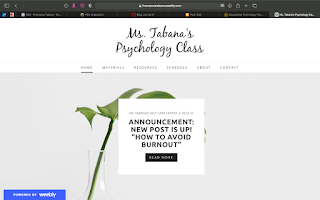blog post #4
The ELA technology standards are set in place to ensure that
students are proficient in their ability to use technology through a variety of
different contexts and applications within their education. Since I plan to
eventually work with university-level students, I chose to focus on grades
11-12, as this is the closest applicable grade level, and this is also when
many students begin preparing for their journey into higher education. One
of the ELA standards featured that I think is definitely necessary in order to
thrive in an institute of higher learning would be Standard
LAFS.1112.WHST.3.8. This standard essentially requires that students
demonstrate that they are able to use advanced searching to find and properly
analyze relevant and credible digital sources. The standard also mentions that
students should be able to seamlessly integrate information from their sources,
without overly relying on direct quotations and ensuring that there is no
possibility of accidental (or intentional) plagiarism by properly crediting and
citing the sources used. I feel confident to implement this standard in my own
classroom; this is a skill set that I learned early on in my educational career
(around 8th grade), but I would say that it has been nearly perfected throughout
years of completing research papers and conducting scientific experiments.
Given that I want to teach at the university level, I would expect that my
students would have met this standard in the recent past, or at least have some
level of experience with researching.
After navigating the CPALMS website, I was able to find the 9-12
grade toolkit, which consisted of common core standards, lesson plans,
activities, and many more resources according to the subject area. I am
interested in teaching psychology but I know that it is not taught as a primary
subject in most primary/grade schools, so I chose to focus on finding
scientific resources related to the brain. I found one single resource for
grades 9-12 on the parts of the brain and their functions, linked here: Major Parts of the Human Brain. This is an
interactive student tutorial, which I thought of as being quite helpful since
psychology is the study of the mind and human behavior; thus, it is imperative
that students have a solid understanding of the location of different
structures, as well as how they contribute to cognitive/physiological
processes, etc. I would easily be able to incorporate this resource in my classroom,
especially if I were teaching a course in cognitive or developmental
psychology. Even within my more niche area of personality psychology,
understanding how differences in hormone levels in the brain can contribute to
the development of mood disorders such as depression relies heavily on having a
solid background in brain anatomy.
I think that one of the most important attributes for both
educational and professional development is having solid research skills.
Research skills are the ability to search for and find relevant information,
and also to collect, analyze, and interpret the information. Having a proper
understanding of good research skills is an integral aspect of an educator's
purpose, as students learn these same skills from their teachers. Educators
need to be able to filter out irrelevant or incorrect information and provide
unbiased material to supplement their students' curriculum. When using search
engines, many students are not aware of their full capabilities; the term
Boolean search may sound just straight-up weird to them. Knowing how to
properly search for information is the key to being able to help your students
learn how to search for themselves. For me, I personally use quotation marks in
my searches quite often, as it returns sources featuring the exact phrase
within the quotations. This helps keep me from wasting time and allows me to
narrow my results down to those of most relevance to my specific topic, which
is key to constructing solid research.

Comments
Post a Comment